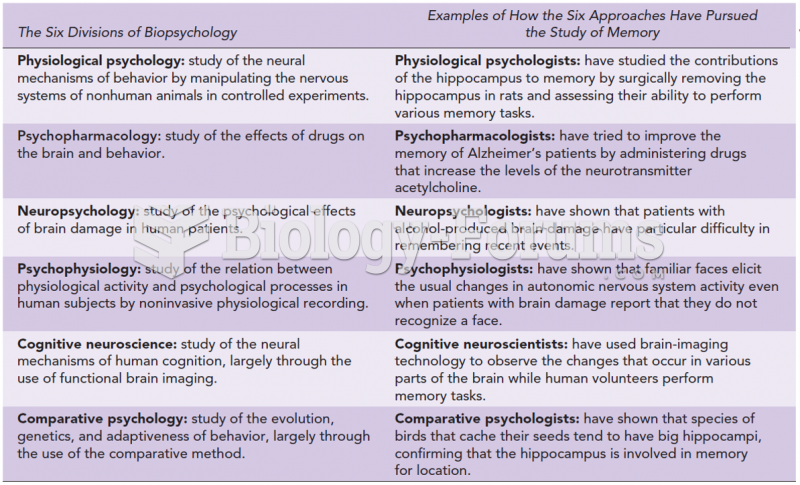|
|
|
Aspirin is the most widely used drug in the world. It has even been recognized as such by the Guinness Book of World Records.
In 2006, a generic antinausea drug named ondansetron was approved. It is used to stop nausea and vomiting associated with surgery, chemotherapy, and radiation therapy.
The first oral chemotherapy drug for colon cancer was approved by FDA in 2001.
The use of salicylates dates back 2,500 years to Hippocrates's recommendation of willow bark (from which a salicylate is derived) as an aid to the pains of childbirth. However, overdosage of salicylates can harm body fluids, electrolytes, the CNS, the GI tract, the ears, the lungs, the blood, the liver, and the kidneys and cause coma or death.
Drugs are in development that may cure asthma and hay fever once and for all. They target leukotrienes, which are known to cause tightening of the air passages in the lungs and increase mucus productions in nasal passages.
 Examples of Scenarios Involving Nonmoral, Impersonal Moral, and Personal Moral Judgments from the St
Examples of Scenarios Involving Nonmoral, Impersonal Moral, and Personal Moral Judgments from the St
 In the box on upward social mobility on page 82, we discussed how Latinos face a similar situation. ...
In the box on upward social mobility on page 82, we discussed how Latinos face a similar situation. ...





